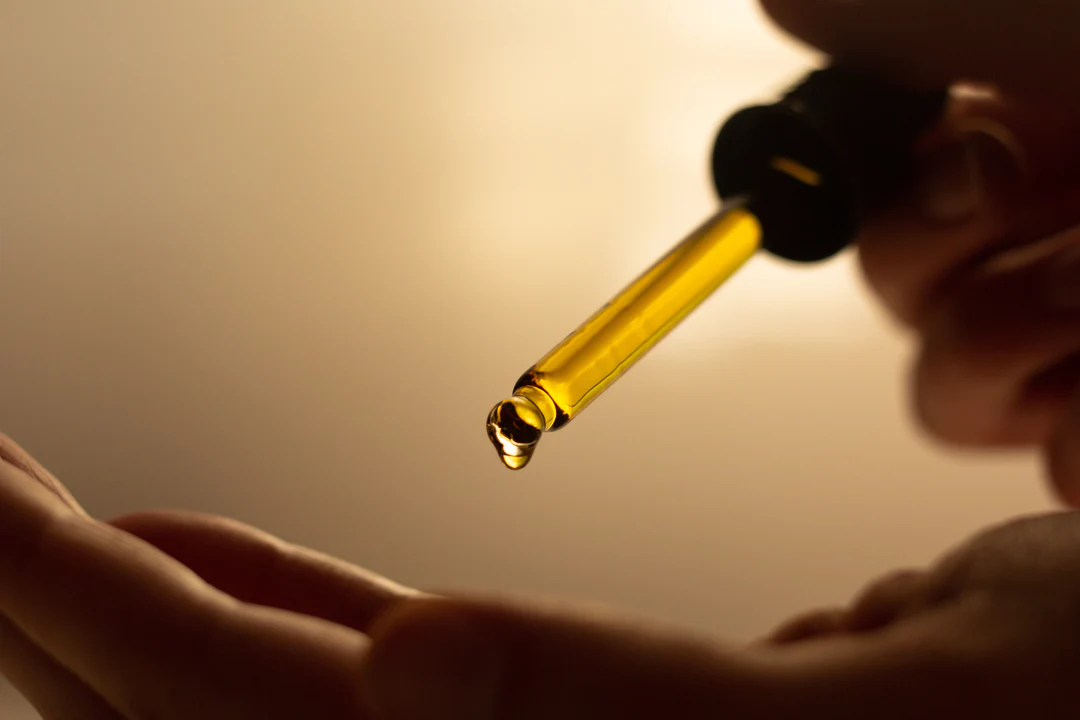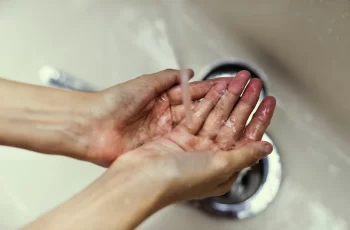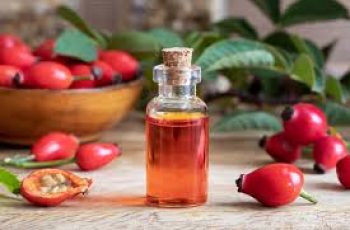Lactic acid and rosehip oil are both powerful skincare ingredients, each offering remarkable benefits to the skin. It’s no surprise that many people are eager to pair them together in their routines. But can lactic acid be used alongside rosehip oil? In this post, we’ll explore this question, so keep reading if you want to learn more.
The main distinction between the two is that rosehip oil is often seen as the more “natural” option, a misconception due to the scientific-sounding name of lactic acid. In reality, lactic acid is derived from natural sources such as milk and other dairy products, which might surprise some.
Before diving deeper, let’s first take a quick look at the individual benefits of lactic acid and rosehip oil.
What is Rosehip Oil?
Rosehip oil is derived from the fruit of the wild rose bush and is commonly used in a variety of skincare and supplement products.
Rich in essential fatty acids like oleic, palmitic, and linoleic acid.
Contains vitamins A and C, which help protect the skin from environmental damage, including pollution and sun exposure.
Known for its ability to treat mild to moderate acne and reduce breakouts.
Can help fade hyperpigmentation and dark spots.
Targets fine lines, wrinkles, and other signs of early aging.
For more detailed information about rosehip oil, check out additional resources on the Skin School website.
What is Lactic Acid?
Lactic acid is derived from fermented dairy products like milk and yogurt, and sometimes fruit sugars are also used in its formulation.
It belongs to the alpha hydroxy acid (AHA) family.
Known for being one of the gentlest AHAs, with a larger molecular size that minimizes irritation.
Exfoliates the skin by removing dead cells, dirt, and debris, helping to clear up common skin concerns.
Stimulates collagen production, improving the appearance of fine lines and signs of aging.
Acts as a humectant, drawing moisture into the skin and helping to maintain the skin’s protective barrier.
For more insights into lactic acid and its benefits, check out our dedicated blog post on the subject.
Can Lactic Acid and Rosehip Oil Be Used Together?
Yes, you can safely combine lactic acid with rosehip oil. These ingredients can be used in different steps of your routine, giving enough time for the skin’s pH to rebalance and preventing irritation.
When layering products, a simple rule is to apply the thinnest formula first, followed by thicker products. Since rosehip oil is an oil-based product, it should be applied towards the end of your routine. This method allows each ingredient to properly absorb and target the skin’s specific needs.
Is It Okay to Apply Oil After Lactic Acid?
Yes, absolutely. As mentioned earlier, to get the best results, start with the thinnest products and layer up to the thickest. A basic skincare routine might look like this: cleanser, exfoliating toner, eye cream, serum, face oil, moisturizer, and sunscreen (for morning routines).
Rosehip oil is incredibly nourishing and hydrating, making it an ideal follow-up after lactic acid. Just make sure to wait a bit between applications to avoid irritation or redness.
Can I Combine AHA with Rosehip Oil?
Yes, you can. However, it’s essential to be mindful when combining these two powerful ingredients. Rosehip oil contains vitamin A (retinol), which is a potent ingredient for skin renewal. To avoid irritation, allow some time between applying lactic acid and rosehip oil to give your skin a chance to adjust. Alternatively, you could apply them at different times of day or alternate between the two on different days—this is especially helpful for those with dry or sensitive skin.
When Should You Apply Rosehip Oil in Your Skincare Routine?
For optimal results, many experts recommend applying rosehip oil twice daily—once in the morning and once at night. It should be one of the last steps in your skincare routine, after cleansing and applying any serums, especially those with hydrating ingredients like hyaluronic acid or niacinamide.
If you’re introducing new products into your regimen, it’s always best to consult with a dermatologist or healthcare provider first. You can also do a patch test to ensure your skin doesn’t react negatively.
Can I Use Rosehip Oil Every Day?
Yes, rosehip oil can be used daily, typically twice a day, depending on your skin’s sensitivity. To be cautious, always perform a patch test before incorporating a new product into your routine.
And that’s a deeper look into using lactic acid and rosehip oil together. If you have any further questions, feel free to reach out to us on Instagram.
DQH Knowledge drop: In your 20s, your skin cell turnover decreases. (Cell turnover is a key component in keeping your skin youthful.) You know what else slows down? Your collagen production. Starting in your 20s, collagen decreases by about 1 percent per year. Should you want to prevent fine lines and wrinkles, start by eliminating behaviors that contribute to premature aging. “If it’s bad for you, it’s bad for your skin,” says dermatologist Michel Somenek.
“Cigarette smoking reduces blood flow to the skin and causes premature wrinkling and a dull skin texture. Making the repeated pursed motion to inhale can also cause smoker’s lines. Alcohol and recreational drugs are toxins for the skin that damage its cellular structure and DNA,” Somenek tells us. “The faster you eliminate vices while you are young, the better chance your skin and body have to recuperate.” Also, adopting an anti-aging routine in your 20s is key. After all, the best offense is a good defense. We spoke to Somenek and experts Joshua Ross and Audrey Kunin to find out more.
Keep reading for the best anti-aging products for your 20s, according to skincare professionals.
Sunscreen
“We all know that the sun is the number one cause of skin aging and starting the prevention in your 20s is very important,” Ross says. “The majority of your sun damage won’t start to appear until you’re in your 30s, so don’t wait until you see it surface or you’ll be behind the curve. Stay ahead of it with a good-quality zinc-based sunscreen worn daily.”
Farmacy Green Defense Daily Mineral Sunscreen
An invisible sunscreen with SPF 30, plus botanical extracts meant to protect skin with tons of antioxidants. Bonus: It’s clean and fine to use under makeup.
Bareminerals Complexion Rescue™ Tinted Moisturizer Broad Spectrum SPF 30
Although we recommend you use your SPF and moisturizer separately, we also understand moments when you don’t have time or energy for that extra step. For those times, this bareMinerals moisturizer is a great thing to have on hand.
Vitamin C Serum
“A great introduction to anti-aging is to start with a vitamin C serum in your morning skincare routine,” Ross says. “It’s a powerful antioxidant that will neutralize free radicals and brighten the skin.” He adds that it’s a great way to counteract the effects of the sun’s harmful rays, which, as previously mentioned, are among the biggest causes of premature aging.
Drunk Elephant C-Firma™ Vitamin C Day Serum
The Drunk Elephant C-Firma is a lightweight serum that promises to give skin a glow by combining the brightening powers of vitamin C with ferulic acid, l-ascorbic acid, and vitamin E. The included sodium hyaluronate is meant to replace hydration loss, so you shouldn’t have to deal with any irritation.
Sunday Riley C.E.O. Rapid Flash Brightening Serum
This potent serum is jam-packed with vitamin C (15 percent, to be exact), which means it’s a potential superstar at both brightening skin and dousing it in antioxidants.
Peptides
Using peptides on your skin has many benefits, says Somenek. “The skin barrier is what defends the body against pollution, UV rays, bacteria, and toxins. It can be damaged by several everyday factors. Using topical peptides aids in building a stronger barrier,” he says. “Peptides comprise elastic fibers, which are a type of protein. These fibers help to make skin appear taut and firm. Peptides can also help repair damaged skin, relieve inflammation, and even out skin tone. Some peptides can kill acne-causing bacteria that is common in 20-somethings.”
Kunin agrees, saying, “Peptides are an excellent entry point for supporting collagen.” She recommends looking for face and eye treatments that contain these collagen-boosting powerhouses.
Charlotte Tilbury Magic Eye Rescue Cream
This Charlotte Tilbury super-emollient eye cream has a base of coconut oil and shea butter (read: it’s incredibly hydrating). Botanicals plus peptides are meant to help reduce dark circles and boost collagen, respectively.
This creamy moisturizer serves up potent collagen-boosting peptides and pycnogenol, and antioxidant-rich vitamin C. “Instead of sitting on top of the skin, peptides penetrate the outer layer so they go deep. The ‘signals’ they send tell the cells to produce elastin and collagen, which are needed for youthful-looking skin,” explains Somenek.
At-Home Peel Pads
Remember that skin cell turnover fiasco we talked about earlier? One way to help support it is by exfoliating. “Exfoliation is important to help keep skin fresh and luminous,” Kunin says. She recommends using at-home peel pads as an easy and effective way to exfoliate.
“The goal in your 20s is to fight the slowing pace of cell turnover. It is wise to use products that gently exfoliate, yet still remove oil and other impurities. Products that have Alpha Hydroxy Acids (AHA) or Beta Hydroxy Acids (BHA) are a good choice.”
According to Somenek, you should only exfoliate two to three times a week. “People of all ages are guilty of over-exfoliating and that can be too much of a good thing,” he says.
Dermadoctor Kakadu C Intensive Vitamin C Peel Pad
A few swipes of this Derma Doctor powerful peel pad promise to leave your skin glowing and smooth, thanks to the seven (yes, seven) types of chemical exfoliants, including AHA and BHA. It also contains vitamin C via Kakadu plum extract for added brightening and antioxidant protection.
KEY INGREDIENTS Kakadu plum extract is sourced from the Kakadu plum, a fruit grown in northern Australia. It contains vitamin C, which restores the skin’s natural barrier, increases collagen production, and soothes irritation.
Dr. Dennis Gross Skincare Alpha Beta® Universal Daily Peel Pads
These are the gold standard of peel pads, with a cult following and over 900 five-star reviews on Sephora. They’re easy to use and contain a blend of anti-aging exfoliating acids.
Emollient Night Cream
“In your 20s, you need to start upping the hydration in your skincare routine. You may have been cautious of over-moisturizing because of acne in your teens, but as you enter your 20s, your skin transitions and becomes drier,” Ross says. “I recommend an emollient night cream added into your evening skincare regimen.”
“Twenty-somethings need to make sure that they are not using creams that will clog their pores and cause excess oil production,” says Somenek. Opt for non-comedogenic products.
Cerave Skin Renewing Night Cream
One great choice is the CeraVe Skin Renewing Night Cream, which is a non-comedogenic night cream that leaves skin soft and glowy. It combines the moisturizing powers of ceramides and hyaluronic acid.
RoC Retinol Correxion Max Hydration Creme
“The best night cream ingredients contain retinol, benzoyl peroxide, and/or salicylic acid or hyaluronic acid. The goal is to moisturize, yet remove excess oil,” says Somenek. This Roc Retinol Correxion cream fits the bill as it contains both hyaluronic acid and retinol so it promises to moisturize while also being non-comedogenic.



